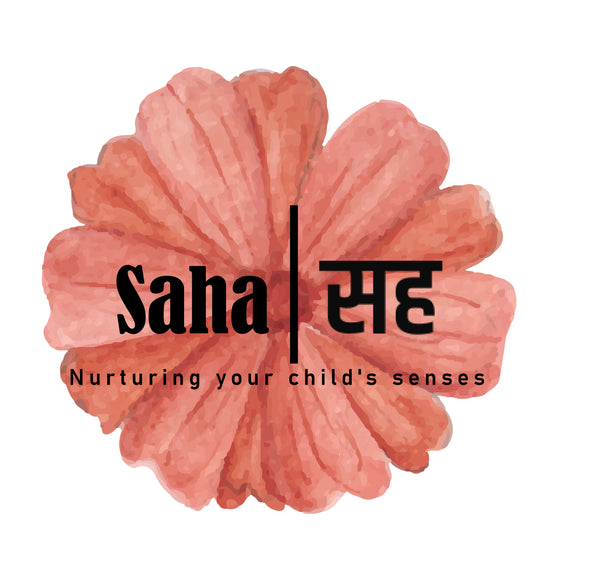
Swaddles for Babies : 3 Things That You Wanted To Know
Share
For generations, Indian families have gently wrapped their newborns in soft cloths soon after birth—a practice rooted in both tradition and maternal instinct. Today, this age-old method, known as swaddling, is supported by modern research and embraced globally by new parents. For Indian parents, blending cultural wisdom with the best of modern parenting, baby swaddles can be a game-changer in ensuring comfort, sleep, and security for your newborn.
In this comprehensive guide, we’ll explore the benefits, safety, and best choices when it comes to newborn swaddles, while answering key questions Indian parents often ask: Are baby swaddles safe? Are baby swaddles good? And what are baby swaddles used for?
What Are Baby Swaddles Used For?
Baby swaddles are specially designed wraps or blankets that snugly cocoon a baby, mimicking the secure, warm environment of the womb. From easing the transition into the outside world to calming a fussy infant, swaddling serves multiple purposes:
- Promotes Better Sleep: Swaddling helps suppress the startle reflex (also known as the Moro reflex), which can otherwise wake newborns abruptly. The gentle compression of an infant swaddle wrap helps babies feel secure and sleep more soundly.
- Reduces Fussiness and Crying: By limiting the flailing of arms and legs, swaddling can soothe a baby and help them settle faster.
- Assists in Temperature Regulation: Newborn swaddle blankets, especially those made from breathable fabrics like organic muslin swaddles, help maintain the baby's body temperature without overheating.
- Supports Sleep Positioning: Baby swaddles encourage babies to sleep on their backs, a position recommended by pediatricians to reduce the risk of Sudden Infant Death Syndrome (SIDS) (American Academy of Pediatrics, 2016).
Are Baby Swaddles Safe?
Yes, baby swaddles are safe—when used correctly. The American Academy of Pediatrics confirms that swaddling can be a safe and effective strategy to help calm infants and promote better sleep. However, there are essential guidelines to follow:
- Always place your swaddled baby on their back to sleep.
- Ensure the swaddle is snug around the chest but loose around the hips and legs to prevent hip dysplasia.
- Discontinue swaddling as soon as the baby starts showing signs of rolling over.
Swaddling with appropriate materials is especially important in India, where weather conditions vary. Organic cotton swaddles or organic muslin swaddles are ideal for Indian climates, providing breathability and softness without overheating the baby.
Are Baby Swaddles Good?
Swaddling has been shown to offer multiple developmental and health benefits:
- Improved Sleep Quality: Research suggests that swaddled babies have longer sleep durations and fewer spontaneous awakenings (Van Sleuwen et al., 2007).
- Enhanced Neurological Calmness: Swaddling mimics the tightness and security of the womb, which may promote neurological comfort and psychological well-being (Gerard et al., 2002).
- Easier Sleep Training: Swaddling can create a predictable sleep routine, making it easier for both baby and parents to settle into nighttime habits.
For Indian parents navigating parenthood amid cultural practices and modern lifestyle demands, infant swaddle wraps provide a perfect blend of comfort and structure.
Choosing the Best Swaddle Wrap for Newborns in India
With countless options in the market, selecting the best swaddle wrap for newborns can feel overwhelming. Here’s what to consider:
1. Material Matters
- Organic cotton swaddles: Hypoallergenic, breathable, and gentle on delicate skin. Great for all seasons.
- Organic muslin swaddles: Lightweight and airy, perfect for warmer regions or summer use in India.
- Flannel or fleece: Suitable for cooler climates or winter months but should be used with caution to prevent overheating.
2. Type of Swaddle
- Traditional receiving blankets: Versatile but require proper wrapping skills.
- Velcro or zip swaddles: Easy to use and ideal for new parents. They ensure a snug fit without the hassle of wrapping.
- Convertible swaddles: These adapt as your baby grows and starts rolling over.
Infant receiving blankets, often made from muslin or soft cotton, are great multi-purpose items that can be used as swaddles, nursing covers, or stroller covers.
3. Size and Stretch
Look for newborn swaddle blankets that are large enough and have a slight stretch to accommodate your baby’s movements without becoming too tight.
Recommended Newborn Swaddles for Indian Parents
Tips for Safe Swaddling
- Don’t over-tighten: Your baby should be able to breathe comfortably and move their hips.
- Avoid swaddling when feeding: Keep your baby unswaddled while feeding to promote movement and bonding.
- Monitor baby’s temperature: Use light fabrics in warmer climates to prevent overheating.
- Stop swaddling once rolling begins: This ensures your baby doesn't end up face-down, which can be dangerous while swaddled.
Cultural Note: Swaddling in Indian Households
In Indian households, swaddling is often introduced within hours of birth. Elders traditionally use cotton dhotis or dupattas as makeshift infant receiving blankets. While these methods are time-honored and still effective, modern swaddles add an extra layer of convenience, especially for working parents or those without round-the-clock family support.
The key is to blend tradition with safety. Whether you choose a soft cotton wrap from your mom’s linen shelf or a branded infant swaddle wrap with Velcro, what matters is your baby’s comfort and security.
Conclusion
Baby swaddles are much more than cute nursery accessories—they’re time-tested tools that offer real emotional and developmental benefits. From calming fussy infants to helping them sleep better, swaddles simplify life for new parents and bring comfort to newborns adjusting to the world.
For Indian parents trying to strike the right balance between ancient wisdom and modern parenting, choosing the right swaddle—be it organic muslin swaddles, infant receiving blankets, or the best swaddle wrap for newborns—can make the early days of parenthood a little smoother and a lot more joyful.
References
- American Academy of Pediatrics. (2016). SIDS and Other Sleep-Related Infant Deaths: Updated 2016 Recommendations. Pediatrics, 138(5). https://doi.org/10.1542/peds.2016-2938
- Gerard, C. M., Harris, K. A., & Thach, B. T. (2002). Physiologic studies on swaddling: An ancient child care practice, which may promote the supine position for infant sleep. The Journal of Pediatrics, 141(3), 398–403. https://doi.org/10.1067/mpd.2002.127503
- Van Sleuwen, B. E., L’Hoir, M. P., Engelberts, A. C., Busschers, W. B., Westers, P., Blom, M. A., & L’Hoir, M. P. (2007). Swaddling: A systematic review. Pediatrics, 120(4), e1097–e1106. https://doi.org/10.1542/peds.2006-2083
- Moon, R. Y., & Glassy, D. (n.d.). Swaddling: Is it safe for your baby? HealthyChildren.org. Retrieved May 17, 2025, from https://www.healthychildren.org/English/ages-stages/baby/diapers-clothing/Pages/Swaddling-Is-it-Safe.aspx
- NCT. (2025, May 16). Swaddling a baby: The benefits, risks and safety tips. National Childbirth Trust. https://www.nct.org.uk/information/baby-toddler/caring-for-your-baby-or-toddler/swaddling-baby-benefits-risks-and-safety-tips
